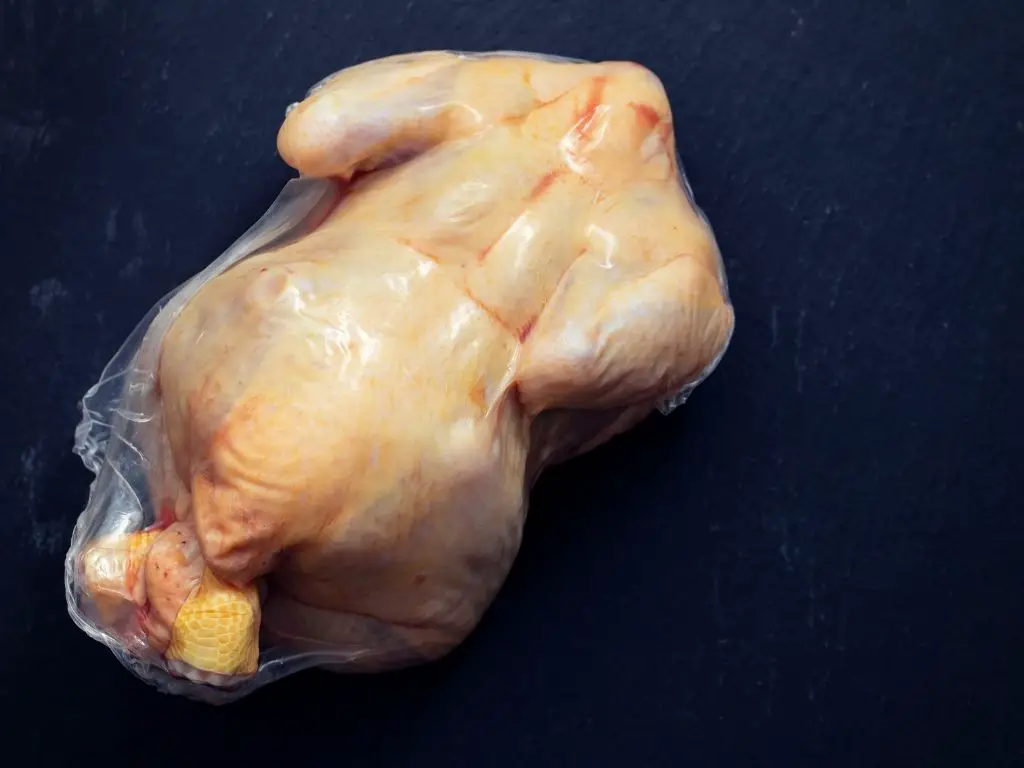Sous vide cooking involves cooking food sealed in airtight plastic bags submerged in precisely temperature-controlled water. This technique allows you to achieve perfectly cooked results every time when done properly. However, there are some common mistakes people make that can lead to overcooking chicken in the sous vide process.

Sous Vide Products I Use Every Day
As an Amazon affiliate, I earn from qualifying purchases.
Last update on 2024-07-26 / Affiliate links / Images from Amazon Product Advertising API
How to Avoid Overcooking Chicken in Sous Vide
1. Use a Precise Timer
One of the keys to avoiding overcooked chicken with sous vide is using an accurate timer. Set a timer for the minimum recommended cooking time for the cut and thickness of the chicken you are cooking. It’s easy to lose track and leave the chicken in too long if you don’t set a timer.
2. Follow Recommended Temperature Guidelines
Cooking chicken sous vide relies on precise temperature control. Overcooking occurs when the temperature is too high or the cooking time is too long. Follow recipes and chef recommendations for temperature and cooking time. For chicken breast, temperatures between 140-150°F are ideal. Dark meat can go a bit higher between 150-165°F.
3. Monitor the Cooking Process Regularly
It’s important to periodically check on the water bath during longer sous vide cooking times. Make sure the temperature is holding steady and that water has not evaporated from the container. Top off with hot water as needed to keep the proper water level.
What Is the Ideal Time and Temperature for Cooking Chicken with Sous Vide?
The specific time and temperature you use for sous vide chicken depends on the cut and thickness. Here are general guidelines:
- Chicken breast (1-2 inches thick)
- 140-150°F for 1-4 hours
- Chicken thighs (boneless, skinless)
- 150-165°F for 2-4 hours
- Chicken legs or wings
- 165°F for 4-8 hours
For food safety, you want to achieve pasteurization by holding the temperature in these ranges long enough to kill pathogens.
Is It Safe to Eat Overcooked Chicken from Sous Vide?
Chicken that is slightly overcooked from sous vide is likely still safe to eat from a food safety standpoint. However, the texture and juiciness will start to suffer. Overcooking causes the proteins to contract and squeeze out moisture.
Chicken left in too long can get mushy and stringy with an unappealing appearance. The flavor also dulls significantly. If the chicken is badly overcooked, it is best to discard it.
How to Get Perfectly Cooked Chicken Using Sous Vide
Follow these tips for ensuring chicken comes out perfectly cooked, not overcooked, when using sous vide:
1. Season Well Beforehand
Make sure to season the chicken well before sealing the bags. Sous vide cooking does not add any additional flavoring. Use salt, pepper, herbs, spices, citrus, etc.
2. Seal the Bag Properly
Remove all air from the bag before sealing to prevent floating or uneven cooking. Use a vacuum sealer or the water displacement method.
3. Let It Rest After Cooking
Once cooked, immediately plunge the bag into an ice bath to halt cooking. Let it rest 15-30 minutes before searing or serving.
4. Sear for a Crispy Finish
For delicious browning and texture contrast, quickly sear the chicken in a hot pan after sous vide cooking.
5. Store Leftovers Safely
Rapidly chill any uneaten chicken in the fridge in shallow containers. Eat leftovers within 3-4 days.
With the right techniques, sous vide chicken comes out perfectly juicy and tender every time. Monitor temperature and time carefully to get the best results and avoid overcooking. Proper prep and finishing steps also ensure maximum flavor and food safety.


![IMPRESA [10 pack] Sous Vide Magnets to Keep Bags Submerged & In Place - Sous Vide Accessories to Stop Floating Bags & Undercooking - Great Alternative to Sous Vide Weights, Balls, Clips, & Racks](https://m.media-amazon.com/images/I/41zHpl8G2lL._SL160_.jpg)


